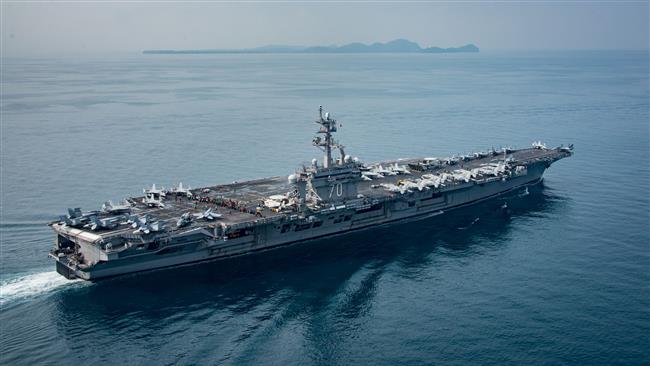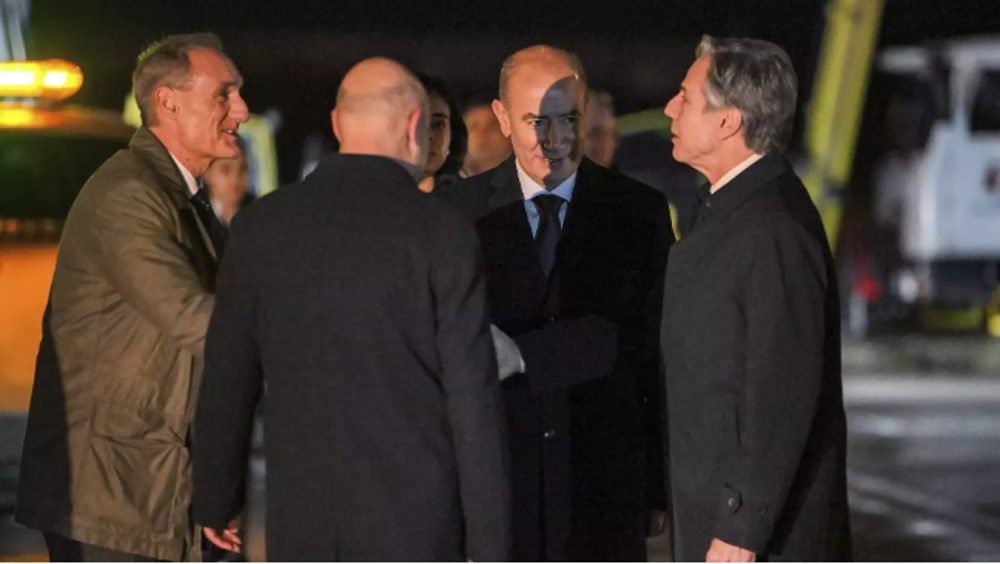Trump’s ‘armada’ was not headed to Korean Peninsula as White House suggested
A US military strike group that American officials said had been dispatched to the Korean Peninsula in a “show of force” against North Korea was in fact heading in the opposite direction at the time, highlighting the dysfunction that has come to symbolize the administration of US President Donald Trump.
No less a top official than President Trump himself had been saying over the past ten days that the strike group was deployed to the Korean Peninsula amid rising tensions with North Korea. “We are sending an armada, very powerful,” Trump said in an interview aired April 12, attempting to look strong in the face of increased military nuclear activities by North Korea.
The pronouncements about the dispatching of the vessels — comprising the large Carl Vinson aircraft carrier and several support vehicles — along with North Korean counter-threats worked to significantly ratchet up tensions.
Several regional countries, including North Korean ally China and adversary Japan, called for restraint. China even made an unprecedented offer to protect North Korea in the future if Pyongyang agreed to give up its military nuclear program, which had initially provided the pretext for hyped-up US rhetoric. China also suspended flights to Pyongyang as North Korea said it had prepared for war.
To all of these countries and to observers the world over, war looked increasingly likely.
Except that it wasn’t, at least not then.
On Monday, the US Navy raised eyebrows when it posted a photo of the Carl Vinson on its website with a caption that said the strike group was heading south through Sunda Strait near Indonesia to later take part in a joint drill with the Australian Navy in the Indian Ocean.
That would be more than 5,600 kilometers southwest of the Korean Peninsula, where Trump and other officials at the White House had suggested the strike group would be.

After the publishing of the photo revealed where the strike group actually was, White House officials were contacted by the media for an explanation, but they declined to comment, referring all inquiries to the Defense Department. There, it came to light, officials had in the absence of close coordination with the White House been directing the strike force on a previously-scheduled mission – the drill with Australia in the Indian Ocean.
A timely show of force that wasn’t
That mission required the vessels, docked in Singapore at the time, to head south, rather than to the north and toward the Korean Peninsula. It also meant that the flotilla would have been unavailable for the Korea mission for some two weeks.
Yet, Pentagon officials, apparently not given specific instructions to direct the strike group toward the north ahead of schedule, stuck to the mission timetable as it was, even as officials at the White House implied the vessels had already headed for the peninsula.
Apart from President Trump, an array of other senior officials, including Defense Secretary Jim Mattis, National Security Adviser Lt. Gen. H. R. McMaster and others, had been busy touting what they said was a dispatch to the Korean Peninsula as a well-timed, strong signal to North Korea.
Those comments and the Pentagon’s silence and failure to seek clarification from the White House thus left everyone thinking that the strike group was in fact on its way to the Korean Peninsula.
A swift worsening of tensions with Pyongyang and, particularly, Trump’s “armada” comment further led to the conviction among the Pentagon officials that it would now be very difficult to change the narrative as it had already shaped.
Then came the Navy’s unwitting posting of the aircraft carrier’s photo.
As the story has unfolded, the US administration has taken corrective steps, specifically ordering the strike group to leave a “curtailed” drill with Australia and head to the Korean Peninsula sooner than previously planned.
Some media outlets have speculated that the drama may have been orchestrated by the White House as “deliberate deception,” intended to send a signal of strength to North Korea without sending the strike group anywhere near it. But, even if that was initially the intention, the US administration’s public image has now suffered as a result of the way the scenario has unraveled. Some observers say Washington faces a credibility issue with its allies South Korea and Japan, which believed the flotilla had been dispatched as an instance of real support only to realize later that it had not.
The more likely scenario remains that of confusion and miscommunication between the White House and the Defense Department. Such confusion has been a frequent feature of the young Trump administration. It began when Trump was yet to officially take office, with a messy transition that continues to take its toll on governance.
Infighting, firings, a failure to fill key cabinet positions, policy reversals, and a disregard for protocol have also all been constant features of the White House since Trump took over as president in January.
But the latest debacle involving the strike group, which came after all the ostensibly tough posturing against North Korea, may be the first to have taken ironic proportions.
Tel Aviv tells Damascus Israeli forces will remain in occupied territory: Report
Dec. 22: ‘Axis of Resistance’ operations against Israeli occupation
‘Abhorrent’: Oxfam says only 12 trucks delivered aid in North Gaza since Oct.
VIDEO | Leader receives religious eulogists on Hazrat Fatima birth anniv.
Pope Francis slams Israel’s ‘machine-gunning’ of Gaza children
US hostage-taking of Iranian nationals violation of intl. law: Deputy FM
VIDEO | Carol Singers for Palestine on London’s Parliament Square
Ansarullah says ‘Israeli terrorists’ incapable of confronting Yemen, warns of secret weapons










 This makes it easy to access the Press TV website
This makes it easy to access the Press TV website